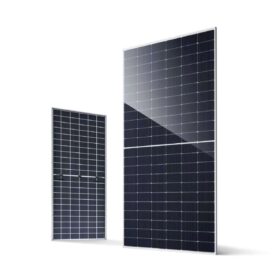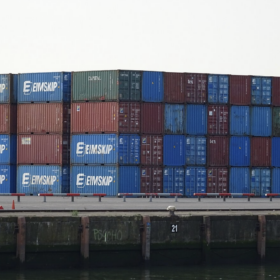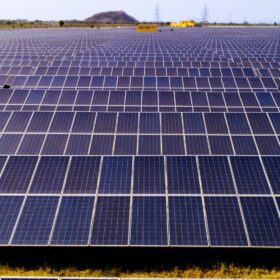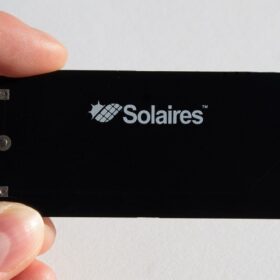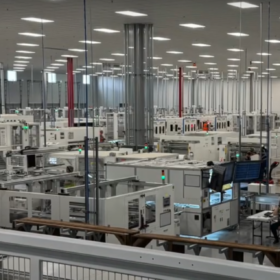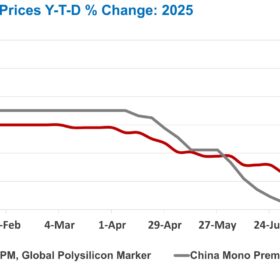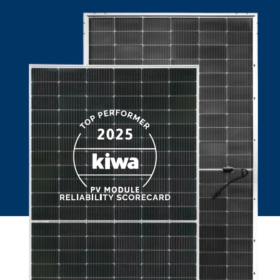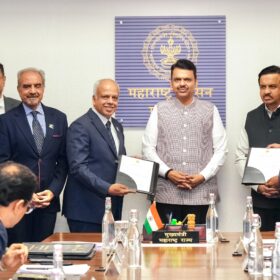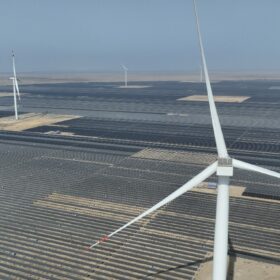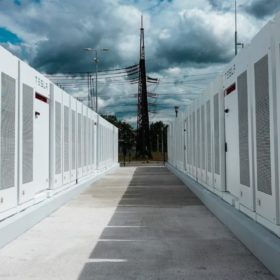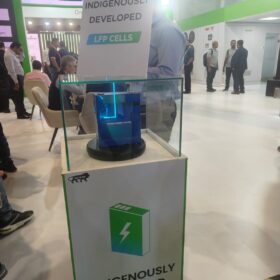JA Solar unveils 650 W TOPCon module for desert PV projects
JA Solar has launched DesertBlue, a 650 W tunnel-oxide passivated contact (TOPCon) module for desert PV projects, featuring self-cleaning glass, reinforced frames, and heat-tolerant design with desert-specific certification.
US trade court orders retroactive solar duties on Southeast Asian imports
The US Court of International Trade has ruled that the Biden administration’s two-year suspension of solar duty collections was unlawful, clearing the way for retroactive tariffs on billions of dollars of solar gear from Southeast Asia.
India installed 18 GW solar in first half of 2025, says Mercom report
India added 18 GW of new solar power capacity in the first half of 2025, with over 11 GW installed in the second quarter alone.
Solaires Entreprises ships indoor perovskite PV modules to first customer
Solaires Enterprises, a Canadian perovskite startup, has begun supplying indoor PV modules for integration into sensor devices, marking its first commercial shipment.
Waaree Energies secures 452 MW solar module order in USA
Waaree Energies Ltd announced that its arm Waaree Solar Americas has signed the agreement with a US developer to supply 452 MW of advanced solar modules.
Jakson Engineers to invest over INR 8,000 crore in 6 GW solar wafer-to-module factory in Madhya Pradesh
Jakson Engineers Ltd is set to invest over INR 8,000 crore to establish a 6 GW integrated solar module, cell and wafer manufacturing plant at Maksi Phase II in Madhya Pradesh. The first modules from the plant are expected to roll out by May 2026 followed by cells in September 2026.
Chinese polysilicon prices stabilize after five-week 31% rally
In a new weekly update for pv magazine, OPIS, a Dow Jones company, provides a quick look at the main price trends in the global PV industry.
Premier Energies begins production at 1.2 GW n-type G12R solar cell line, unveils 620 W DCR TOPCon module
Premier Energies Ltd has commenced commercial production at its 1.2 GW n-type G12R solar cell line and has launched 620 W DCR bifacial solar modules featuring n-type TOPCon cells based on the rectangular G12R wafer format.
ALCM implementation to hamper execution of 20-25 GW of green open access projects
Following the implementation of Approved List of Cells and Manufacturers (ALCM), the expected shortage of DCR modules is likely to hamper the execution of nearly 20–25 GW of green open access projects over the next 2-3 years. Concurrently, the high prices of DCR modules will also increase the project power tariff by up to INR 0.4 – 0.5 per unit.
Jupiter International to set up solar wafer-to-module factory in Maharashtra
Jupiter International Ltd has signed a Memorandum of Understanding with the Government of Maharashtra to set up a vertically integrated solar manufacturing facility in Butibori, Nagpur, with an investment of around INR 10,900 crore.
